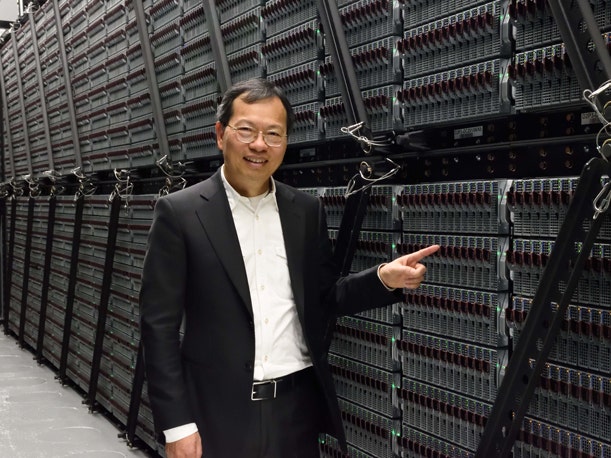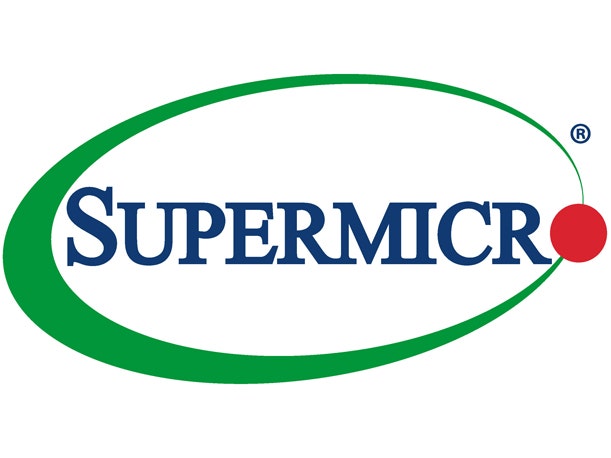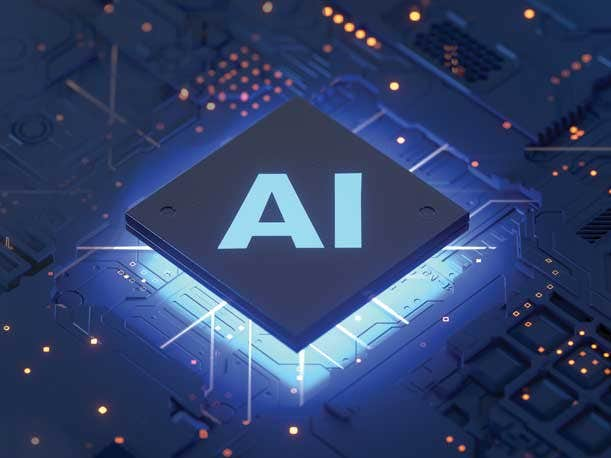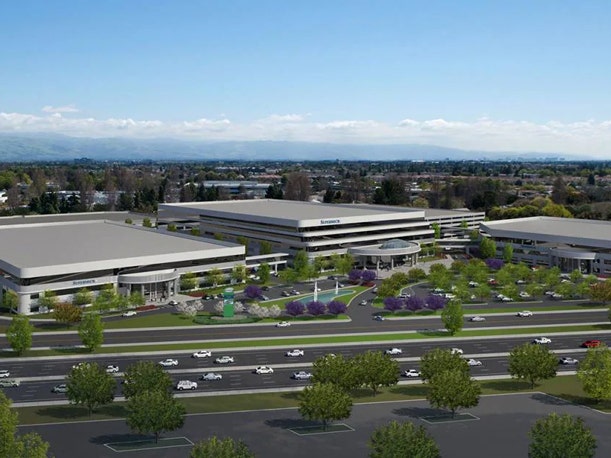Supermicro CEO: ‘We Are In What I Call An AI Revolution’
‘Sometimes I like to compare the AI revolution with the Industrial Revolution of 200 years ago. I personally believe this AI revolution impact to our planet can be even bigger than the industrial revolution because AI impacts our lives in everything, both visible and invisible. So the impact will be everywhere,’ says Supermicro Founder, President, and CEO Charles Liang.

The AI Powerhouse That’s Not Nvidia
Move over, Nvidia. There’s another company riding the artificial intelligence wave with faster growth than GPU manufacturer Nvidia, which has in the past few years been at the forefront of the AI wave. That company, Supermicro, is in a part of the IT industry that only a few years ago was ignored because of a widespread belief that the manufacturing of “commodity” hardware like motherboards, servers, storage, networking, and PCs had little future next to such fast-growing areas as the cloud.
Instead, Supermicro has the kind of business most manufacturers can only dream about. The company, which last August reported fiscal 2023 revenue of $7.12 billion, just last month revised its fiscal 2024 revenue guidance to $14.3 billion to $14.7 billion, which was significantly higher than its prior guidance of $10 billion to $11 billion.
But it’s not just revenue growth alone that has driven Supermicro’s stock price over the last 12 months from under $282 per share to close to $1,000 per share as of Thursday. Instead, what has really caught the eye of IT buyers, solution providers, and investors is Supermicro’s big push into AI.
[Related: Accenture Places $3B AI Bet Following Multiple Acquisitions]
Charles Liang, Supermicro’s founder, president, and CEO, told CRN that he has been involved in some form of the AI business since he immigrated to the U.S. from Taiwan 38 years ago, when he was involved in medical expert systems, which are computer systems that apply intelligence to provide accurate medical diagnostic information.
Even more importantly, he founded Supermicro in 1993, the same year Nvidia was founded. Indeed, the two companies’ headquarters were within 10 miles of each other, which helped foster a 30-plus-year relationship wherein Supermicro’s motherboards and systems incorporated Nvidia chips, particularly its GPUs which have become the base on which much of today’s AI infrastructure is built.
“So whatever Nvidia develops, we pretty much sync up with them,” he said. “And that's another reason why, whenever they have a new product out, we have a new product available quicker than our competitors do.”
For as fast as San Jose, Calif.-based Supermicro’s business is growing, with the company now guiding fiscal 2024 revenue to be about twice that of fiscal 2023, its AI-related business is growing even faster as the company expands how it brings AI into its product line, including AI PCs, Liang said.
Indeed, AI-related technology now accounts for over half of the company’s revenue, he said.
“[It’s] because we had solutions available earlier than others,” he said. “And AI is booming, including generative AI and inference AI. We provide all of those product lines and total solutions.”
For more of CRN’s conversation with Liang, click through the slideshow.

How do you define Supermicro?
Supermicro is the IT total solution company. And now for sure the AI infrastructure total solution company. I emphasize total solution because our goal is to provide our partners with a complete solution from us: services, storage, switches, rack, thermal, cooling cabling, security, firmware, software, management software, on-site service, on-site deployment. With today's technology, especially for AI, rack-scale solutions could be 40kW, 80kW, or even more. So the infrastructure for data center racks has become much more sophisticated, much more challenging. And we found that it’s not easy for our partners, including distributors, SIs (service integrators), and resellers, to meet their customers’ demands quickly. Our position is to help our partners to manage their infrastructure business easier.
Supermicro has been growing very quickly in just the last year alone. What’s behind that extraordinary growth?
Technology. As you know, personally I have been an engineer for almost 50 years. So we accumulated lots of innovation, lots of technology. And because of our build block-type solution with our green computing, we have accumulated a lot of technology. That enables us to design new technology with faster time to market, better quality, easier deployment, easier maintenance, and easier logistics. That has made Supermicro able to support our partners efficiently. This trend will continue, and I'm pretty excited to grow with our partners.

AI seems to have become a big emphasis at Supermicro. How did Supermicro become a big player in the AI space?
Actually, we have been focused on AI for about 15 or 20 years. Actually, I came to the United States from Taiwan about 38 years ago for AI. I came here for medical expert systems, which is actually medical AI. Now AI is booming, and we have been working with our partner Nvidia since day one. Both Nvidia and Supermicro were founded in 1993 in Silicon Valley. We are only about 10 miles apart. So whatever Nvidia develops, we pretty much sync up with them. And that's another reason why, whenever they have a new product out, we have a new product available quicker than our competitors do.
How have reports about GPU supply constraints at Nvidia impacted Supermicro?
Yeah, we have seen the same impact. Not enough supply, but very strong demand. So we continue to work with partners like Nvidia and with our customers to arrange a supply schedule and solution. So hopefully the supply situation will continue to improve.

Is AI revenue a meaningful percentage of Supermicro’s total revenue?
Now more than 50 percent of our business is AI-related.
How did that happen?
Because we had solutions available earlier than others. And AI is booming, including generative AI and inference AI. We provide all of those product lines and total solutions.
How does Supermicro’s AI product line compare to those of other vendors like IBM, Hewlett Packard Enterprise, Dell, or other companies?
Again, as an engineering-oriented company, we have a new technology come-to-market advantage. And especially when it comes to total solutions. So we are able to build new technology and total solutions earlier than others. And because we are very focused on engineering solutions, we can develop total solutions like rack-scale plug-and-play infrastructure when customers need a generative AI or inference AI solution. That mean we install all the servers, storage, switches, security, software, and management storage. And when customers receive our racks, they’re ready to run. Just plug in two cables, a power cable and a networking cable. And if they go for liquid cooling, then also plug in a liquid tube. So plug in three cables or tubes, and then they are ready to go on-line. So this makes the customer’s job much easier and much more reliable.
Do you see any of your competitors moving in that direction?
Maybe. But we started rack-scale total solutions about five years ago. So we have a very strong foundation and large scale here. So we are able to service many more customers once the supplier problem improves.

You mentioned that Supermicro has been working with AI for years. Prior to the transition to AI, the last big transition was from on-prem to the cloud, which took a few years. If you look at the transition from non-AI to AI infrastructure, do you think that transaction will be faster than the transition to cloud?
Maybe about the same timeframe, or maybe even longer. We are in what I call an AI revolution. Sometimes I like to compare the AI revolution with the Industrial Revolution of 200 years ago. I personally believe this AI revolution impact to our planet can be even bigger than the industrial revolution because AI impacts our lives in everything, both visible and invisible. So the impact will be everywhere. People like to have everything more convenient and more safe and quicker and more powerful, more accurate. People have unlimited demand. Even in entertainment, people want to see their games made more fancy, more real, and more positive. So I guess this transition will be long term, and will be huge.
While Supermicro has very focused on infrastructure including AI infrastructure, how about on the PC side? Is the company focused on AI PCs?
Yes, exactly. People who are in the cloud want training and data centers. But they also want the edge side, the client side, the personal side. As a global company, a total IT solution company, for sure we are focusing in on AI PC as well. Supermicro was founded in Silicon Valley 30 years ago, and Silicon Valley is more expensive for almost everything than other cities. And that’s why Supermicro became good quality, good time-to-market, good service company. But while we continued to grow our business, we extended our operations to Taiwan and Malaysia. That enables Supermicro to provide a much higher volume solution to the world, to support more customers and improve our cost structure. So we can do AI PCs with good volumes and lower costs.

Speaking about Supermicro’s offshore business, the United States and China are having some geopolitical issues in terms of technology transfers and sales. How has that impacted Supermicro?
We have a long-term plan. We opened our facilities in Taiwan over 10 years ago. We’re also in Malaysia now. So the impact to us is relatively small.
Does Supermicro have a big business in China in terms of selling or buying components there?
Our business there is relatively smaller than [that of] our competition. We have been in Silicon Valley for more than 30 years. So we’ve had to adjust ourselves to make our business here more efficient to serve our customers.

Supermicro has seen amazing growth in the past year. …
We are growing quickly year over year. Last quarter we saw 103 percent growth year-over-year. So we’re fast-growing, and our scale now is getting much bigger. For the last three years, we grew about 40-something percent, then 30-something percent, and then over 100 percent. And next year, I believe we’ll continue to grow quickly. Economy of scale has been important to us. So with larger scale, we're lowering our costs. And that enable us to support more customers with economical scale including service.
How about your AI business?
Specifically for AI, we’ll grow even faster.
How long can Supermicro sustain that kind of growth?
I don’t know. But I have good confidence that we will continue to grow in a very fast way. Especially with our Silicon Valley base, our economic foundation, and our total solution foundation. We bring complete systems to help our customers, and we have been getting more and more happy customers. Our operations are growing quickly in Taiwan and Malaysia. And there’s another new campus we have ready. So I believe our growth in the long term will be solid and fast.

You mentioned a new campus. Where's that being built?
We did not share the details yet. Hopefully we can share soon.
In the U.S.?
It can be in the U.S.
You talked about the importance of Silicon Valley for Supermicro. The last couple of years has seen several companies leave California because of taxes and the high cost of doing business. Are you committed to remaining centered in Silicon Valley?
Yeah, Silicon Valley is expensive, as you know. But we like Silicon Valley very much at the same time. Because here we have a lot of innovation partners and lots of high-end customers. Customers and innovation partners also love Silicon Valley. So I believe we will stick with Silicon Valley for the long term, and at the same time we are also growing new campuses in other countries or other cities.

Supermicro has multiple sales channels from retail to distribution to OEM and custom system builders. What is the channel mix for Supermicro and how is that changing?
The channel is really important to us. We start working with the channel since day one, 30 years ago, and we are continuing to try our best to support the channel because we are a technology company and a manufacturing company as well. We are also a strong software and firmware company as well. So we like to work with the channel to broaden our customer base. We support customers around the world, and the channel is our business partner. And with today's technology, especially AI—that’s why I just mentioned that customers now are looking for rack solutions with 40kW, 60kW, maybe 100kW very soon, I guess very soon. It's not easy for channel partners to do all of those by themselves. So our goal is to provide a common solution to our partners so they can easily service their customers while providing their local value, their different value. At the same time, we continue to support large cloud and CSPs (cloud service providers) and other large partners including OEMs. Wo we are growing two ways: channel and direct large customers.
Anything else we need to know?
The channel is always our good friend, and always our very important partner. So we have to do our best to support the channel. We continue to grow fast, and the relationship with channel partners is more important than ever.